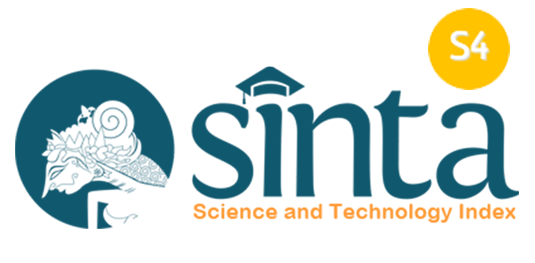Determining Factors In Adoption of Accounting Application
Abstract
The study aims to test the determinant MSME players in the adoption of an accounting application in MSMEs. The low intention of MSME players in using the Business Financial Record Application is not in line with the increase in the number of MSMEs every year. This study using Unified Theory of Acceptence and Use of Technology (UTAUT) Model Venkatesh, Morris, Davis, and Davis (2003) with the CIA Security Information Concept (Qadir & Quadri, 2016) to test the intention and use of accounting applications by MSME players. This study uses a combination of the two constructs as previously used in the study Salam and Ali (2020). The sample is 100 respondents, data processing was carried out by testing the validity and reliability and followed by model tests using PLS analysis from the SEM model. The results of the study showed that Performance Expectancy, Perceived Availability, Perceived Confidentialy have an effect on Intention to Use. Meanwhile, the facilitating condition does not affect actual use and Perceived Availability and Perceived Confidentiality also do not affect the intention to use. This study proves that the intention in using accounting recording applications in MSMEs is highly dependent on the environment, both from the community, relatives and even the government. When they start using and get convenience according to their expectations, they tend to continue using the application. The implication of this study is that the phenomenon of low use and adoption of business digital financial applications is one of the tasks for the government, especially in improving the regional economy. By using a digital financial recording application, MSMEs will get a lot of convenience, especially in terms of capital. MSMEs that have strong capital will be able to increase the income of a region.References
Bashir, N. A. A. (2020). Penerapan Model UTAUT 2 Untuk Mengetahui Faktor-Faktor yang Memengaruhi Penggunaan SIORTU. ELINVO (Electronics, Informatics, and Vocational Education), 5(5), 42-51.
Boșoteanu, M. C. (2016). Cloud Accounting In Romania. A Literature Review. International Conference “Risk in Contemporary Economy", XVII.
Davis, F. D. (1989). Perceived Usefulness, Perceived Easy of Use, and User Acceptance of Information Technology. MIS Quarterly, 13(3), 319-340.
Dyt, R., & Halabi, A. K. (2007). Empirical Evidence Examining the Accounting Information Systems and Accounting Reports of Small and Micro Business in Australia. Small Enterprise Researc, 15(2).
Musa, Z. K. C., Muhayiddin, M. N., Yusoff, M. N. H., Ismail, M., & Muhamad, M. (2019). Intention to Use Cloud Accounting System Among SMEs in Malaysia: A Conceptual Framework of a Modified Unified Theory of Acceptance and Use of Technology (UTAUT) Model. Research in World Economy, 10(2), 74-78.
Qadir, S., & Quadri, S. M. K. (2016). Information Availability: An Insight into the Most Important Attribute of Information Security. Journal of Information Security, 7, 185-194.
Salam, N. R. A., & Ali, S. (2020). Determining Factors of Cloud Computing Adoption: A Study of Indonesian Local Government Employees. Journal of Accounting and Investment, 21(2), 313-332.
Tarmidia, M., Rasid, S. Z. A., Alrazia, B., & Ronic, R. A. (2014). Cloud computing awareness and adoption among accounting practitioners in Malaysia. Procedia - Social and Behavioral Sciences, 164, 569 – 574.
Tsiakis, T., & Sthephanides, G. (2005). The concept of security and trust in electronic payments. Computers & Security, 24, 10-15.
Venkatesh, V., Morris, M. G., Davis, G. B., & Davis, F. D. (2003). User Acceptance Of Information Technology: Toward A Unified View. MIS Quarter, 27(3), 425-478.
Zaini, W. H. A., & Hamad, M. K. (2020). Factors affecting the adoption of an accounting information system based on UTAUT2 and its implementation in a tourism corporation. African Journal of Hospitality, Tourism and Leisure, 9(1).

